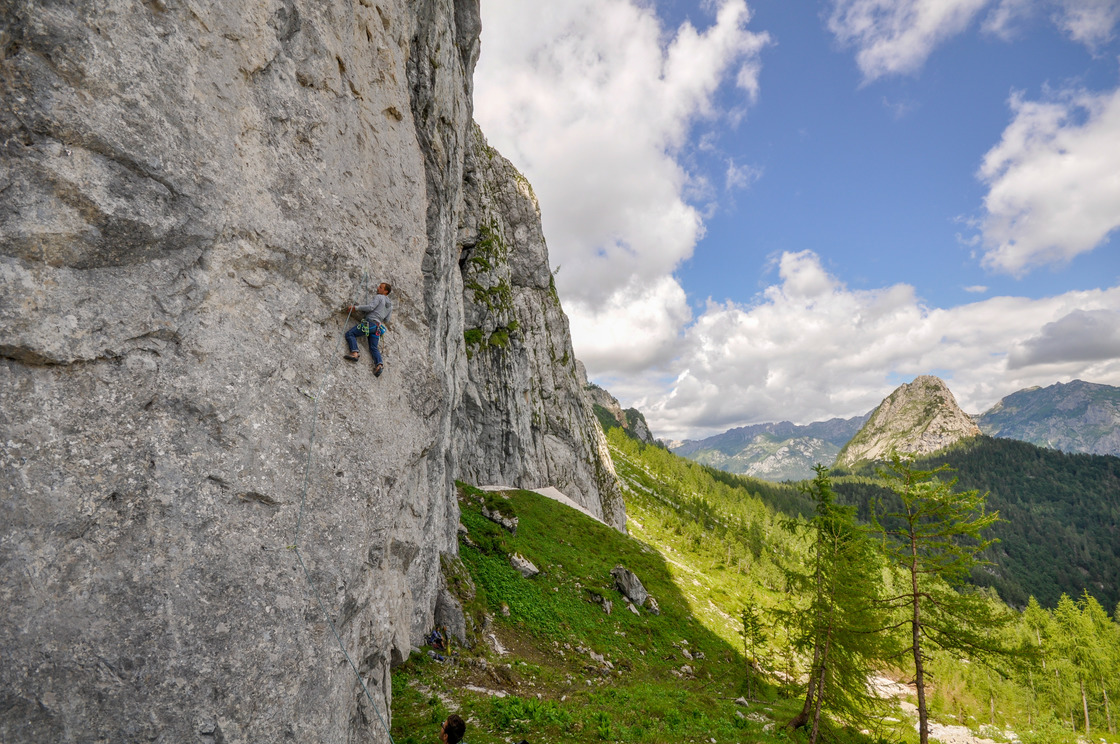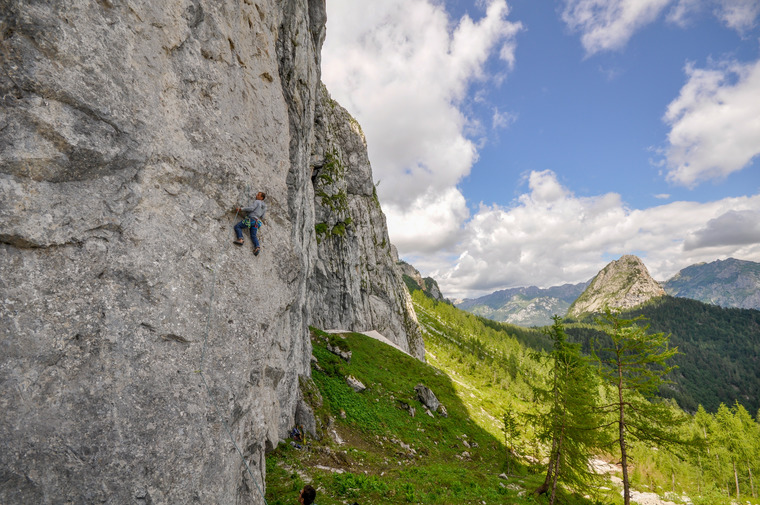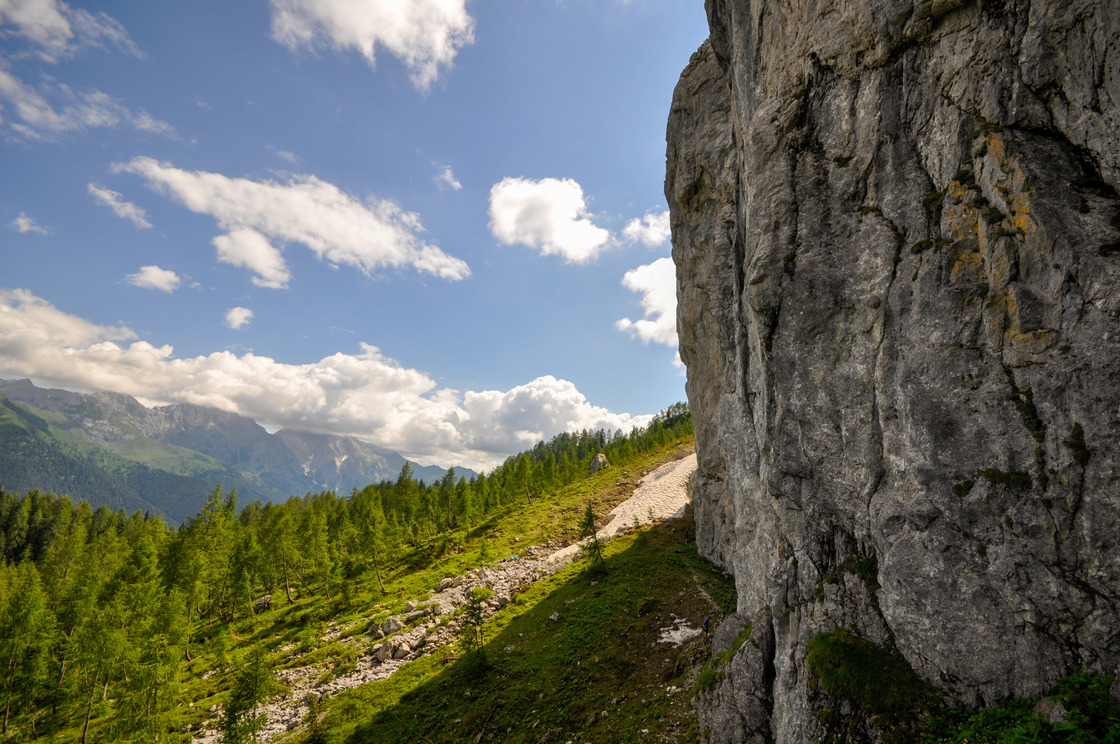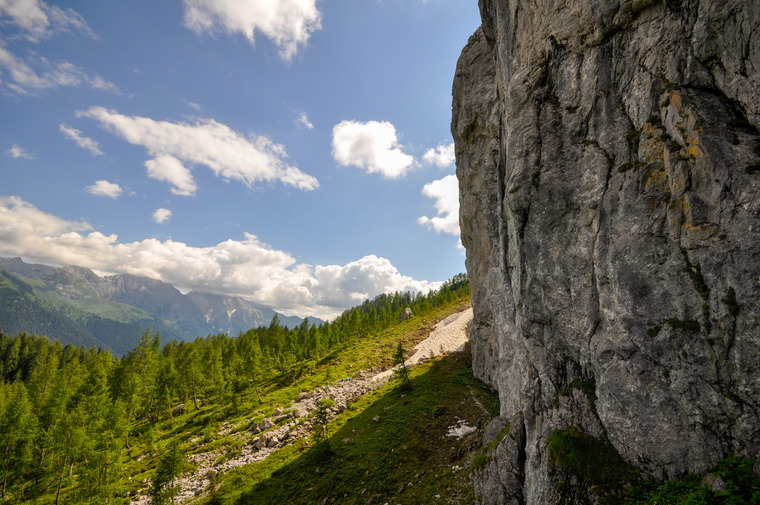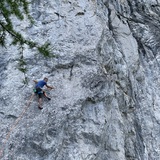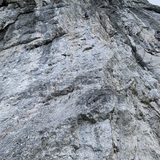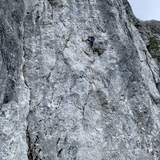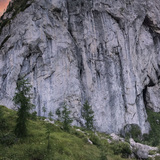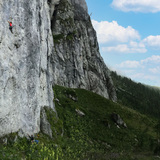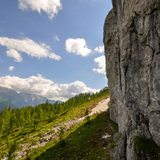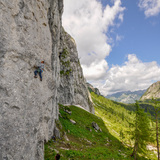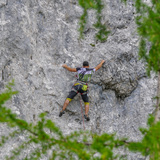🚶🏻♂️⏱ 40' / 2 km - ⏱ N/NE - ⇡ 1650 mt
🇬🇧ENG
Purely summer crag (even during the hottest days it is likely to have to wear at least a sweatshirt when not climbing), thanks to its exposure to the North and the altitude of about 1700 meters, inserted in a beautiful natural landscape that deserves to be visited also by who does not climb.
The imposing face of Monte Pleros is in typical gray limestone, characterized by holes, notches and slopers, with inclination from vertical to overhanging, but there are also sections of slab and grip.
The result is complete climbing, where good strength and endurance are required, but also confidence in the feet.
The difficulties of the pitches are medium-high but recently easier itineraries have also been aided starting from 6a. Some routes have lengths of up to 40 meters, so an 80m rope is recommended.
🇮🇹 ITA
Falesia prettamente estiva (anche durante le giornate più afose è probabile dover indossare almeno una felpa quando non si scala) , grazie alla sua esposizione a Nord ed alla quota di circa 1700 mt, inserita in un bellissimo contesto paesaggistico naturale che merita essere visitato anche da chi non scala.
L'imponente parete del Monte Pleros è in tipico calcare grigio, caratterizzata da buchi, tacche e svasi, con inclinazione da verticale a strapiombante, ma non mancano le sezioni di placca ed aderenza.
Ne consegue un'arrampicata completa, dove è richiesta buona forza e resistenza, ma anche fiducia nei piedi.
Le difficoltà dei tiri sono medio alte ma recentemente sono state attrezzati anche itinerari più facili a partire dal 6a. Alcune vie hanno lunghezze che arrivano ai 40 mt, perciò è consigliabile una corda da 80mt.
